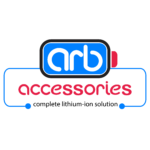
ARB takes pride in being an internationally certified Lithium-ion battery manufacturer in India.
Quick Links
Copyright © 2022 ARB ACCESSORIES PVT. LTD. All Rights Reserved
Proud Partner | DIBUDDY
We have seen a wide range of batteries with lithium-ion technology. It is because of the different uses and applications of li-ion batteries in almost every industry. From mobile phones to automobiles, every small and big device requires a battery to function. However, have you ever thought how does a battery perform all these functions effectively?Today, we are going to discuss everything about the composition of a lithium battery to help you understand its technology.
Most of the devices require a battery to work. The lithium-ion rechargeable batteries help to power the appliances conveniently. They are light in weight and easy to carry, making it one of the most reliable sources for electrical gadgets.
The most common use of lithium batteries is in UPS. They are a great source of instant power in case of an emergency or a power cut. Most of the electrical appliances require a UPS to avoid any power cut that may damage the hardware of the device. One another very important use of UPS equipped with a Lithium battery to ensure no power cut for emergency services and situations.
In the last few years, we have seen a drastic change in the electric vehicle industry. These vehicles work on lithium-ion batteries and require a continuous source of electricity. Lithium batteries help EV manufacturer to achieve their objective of provided ECO-friendly Transportation.
Personal utilities like hearing aid, wheelchair, and scooters can use a lithium battery for the convenience of a disabled person. It is one of the most important applications of Liion batteries. These are ideal batteries to use in personal utility because there are no harmful chemicals in this battery. On the other hand, lead batteries can cause some damage to an individual’s health in case of a short-circuit
The simple way to understand its composition is by starting with Lithium itself. The Metal part of the lithium works as the cathode of the battery. The Cathode (metal lithium) gives the battery its characteristics after going through a reaction with the Electrolyte. However, as you may know, that lithium is highly reactive with oxygen, it is usually the lithium oxide that forms the cathode. Hence, the representation of the Liion battery composition is done with the lithium oxide. As for the Anode part, the separator helps in keeping it away from the cathode to maintain the potential difference between them. Potential difference is the difference between the charges of the anode and cathode. Higher the difference, the higher the current. Another reason to use separator is to ensure the safety of the battery and the appliance
Almost every lithium-ion battery in the world has four main parts. These parts are Anode, Cathode, separator, and Electrolyte. No matter how powerful the battery you use, these four components are the source of energy for them. From a toy to the electric cars, everything runs on the four parts that we have mentioned above. The material coated on the cathode terminal determines the battery voltage and power. Hence, it is a crucial battery of every li-ion battery. It helps in releasing lithium ions with its properties. In simple words, a battery with a large number of ions will have more capacity than a battery with a small number of ions.
Curious about lithium-ion technology? Need help selecting the right battery? Call us toll-free or use the form to let us know how we can help and we’ll be in touch with you promptly.

ARB takes pride in being an internationally certified Lithium-ion battery manufacturer in India.
Copyright © 2022 ARB ACCESSORIES PVT. LTD. All Rights Reserved
Proud Partner | DIBUDDY
Hi